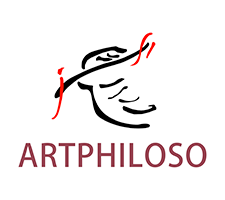Art Collection Survival Guide: How to Spot True 'Uniqueness' and Real Talent
Ever walked into a gallery, fell in love with a piece, but had no clue if it’s actually worth buying?
Unlike everyday items with clear functions, art’s value lies in its "uselessness." And the core of that "uselessness" is uniqueness. But here’s the catch: When we talk about a work’s uniqueness, we don’t mean two slightly different pieces are both "unique." True uniqueness means that even when you zoom out way beyond minor details—looking at the entire art market and art history—the work still stands apart. For artists today, achieving this is brutally hard. After thousands of years of art history, carving out something truly original feels like finding a needle in a cosmic haystack. But it’s not impossible.
Here’s the twist: Spotting this uniqueness isn’t for amateurs. It takes years of visual training, a brain stuffed with art history, and exposure to countless masterpieces. It’s not about noticing surface-level differences—it’s about seeing the gaps in brushstrokes, techniques, emotions, ideas, and perspectives.
But what if you don’t have an art historian’s eye?
Here’s a shortcut: Focus on the artist, not just the art. An artist’s "individuality" is easier to gauge than a single work’s uniqueness. If you’re eyeing a piece but feel lost, skip the gallery jargon. Instead, talk to the artist. Can’t meet them? Watch their interviews, read their words. You’ll learn more from their mindset than any sales pitch.
Remember: Collecting art should be about discovery and curiosity, not chasing trends. Real value lies in works that outlive time, stir emotions, and push art forward. Train yourself to blend academic knowledge, historical context, and market savvy. Hunt for emerging artists who respect tradition but break new ground. Build a collection around themes or movements—it’ll hold value better than random "hot" picks.
One truth every collector needs to hear:
When you buy art, you’re not just paying for paint and canvas. You’re investing in the artist’s vision—how they see the world, think about it, and translate it into art. These three layers (eyes, mind, hands) rarely align perfectly. Finding artists who nail all three? That’s the holy grail.
Ready to discover artists with bold visions and razor-sharp thinking?
Welcome to explore our website works and find your unique connection from Philo's works and stories.—you might just find a piece that speaks your language.
